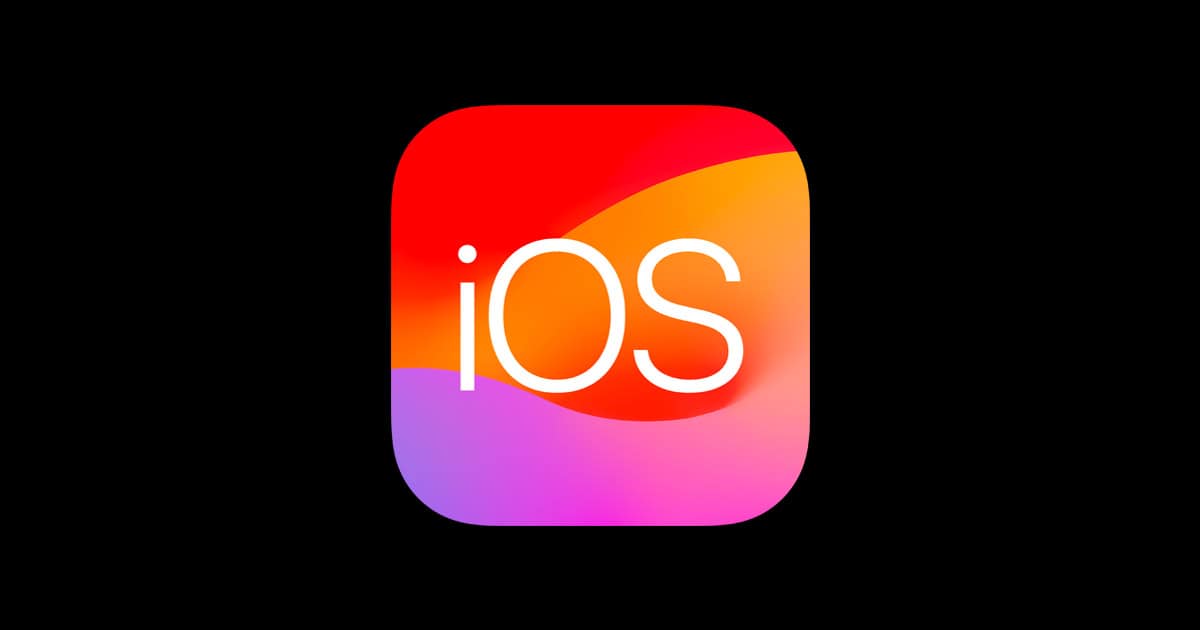As Apple gears up for its major software showcase at WWDC 2025, it’s easy to overlook the importance of what’s arriving just before it. iOS 18.5 and iPadOS 18.5 may not be splashy headline-makers, but these updates play a critical role in polishing Apple’s mobile ecosystem ahead of the next big leap. Now in their third beta for developers and second for public testers, these pre-WWDC updates are more than just routine maintenance—they’re carefully tuned refinements that address user feedback, streamline usability, and quietly prep the platform for what’s next.
Release Timeline and Development Status
Apple’s beta cycle for iOS 18.5 and iPadOS 18.5 kicked off on April 2, 2025, with a steady rollout of follow-up builds for both developers and public testers. The cadence suggests a stable development environment, and all signs point to a public release in mid-May 2025—likely around the second or third week, aligning with Apple’s past “.5” releases like iOS 17.5 in May 2024.
What’s New in iOS 18.5 and iPadOS 18.5
These aren’t major overhauls, but there are several quality-of-life improvements that users will appreciate—especially those who manage daily workflows on their Apple devices.
1. Mail App Customization Enhancements
Apple is giving users more direct control over how contact photos appear in the Mail app. Instead of digging through system settings, a new toggle located in the three-dot menu makes it easier to hide or show contact avatars. It’s a subtle change, but one that reflects Apple’s growing attention to UI ergonomics.
2. “All Mail” Now Easier to Find
The unified “All Inboxes” view has become a fixture for many users, but the new beta makes the “All Mail” option far more accessible as a dedicated tab. Previously tucked away, this view is now a first-class citizen in the Mail app’s navigation.
3. AppleCare+ Info Front and Center
A newly styled AppleCare+ banner in the Settings app puts warranty and support coverage right at the top of your device info page. Whether you’re troubleshooting or just checking coverage, this change makes warranty details far less buried.
4. Early Signs of Pride Month Wallpaper
Code sleuths have discovered references to Apple’s upcoming Pride wallpaper in the beta, continuing a now-annual tradition of honoring Pride Month with colorful custom designs. It’s not live yet, but expect it to roll out closer to June.
5. Connectivity Improvements for International Markets
For users in India, iOS 18.5 Beta 3 brings support for standalone 5G on Airtel and Rich Communication Services (RCS) on Jio. These changes mean improved speed, better call quality, and more modern messaging standards in one of Apple’s fastest-growing markets.
6. Performance and Battery Enhancements
Testers have reported smoother animations, quicker app launches, and marginally improved battery life. It’s not flashy, but these refinements lay the groundwork for stability across devices, especially older iPhones and iPads still running strong.
Why iOS 18.5 Matters (Even If iOS 19 Is the Star)
Apple’s “.5” updates serve a strategic purpose. They aren’t meant to dazzle—they’re meant to stabilize. Think of iOS 18.5 as a bridge between the foundational work laid in iOS 18 and the forward-looking features promised in iOS 19. These updates smooth out rough edges, implement feedback from the first half of the software cycle, and ensure a consistent user experience before the bigger transitions begin.
Just like iOS 16.5 and 17.5 before it, iOS 18.5 shows that Apple is listening between the lines. It addresses minor frustrations, offers incremental visual polish, and clears the decks for what’s to come. While WWDC will bring all the buzz with iOS 19, the 18.5 update is the one you’ll actually live with on a daily basis—at least for now.
Final Thoughts
If you’re looking for sweeping changes, hold out for June. But if you’re after stability, polish, and a few smart conveniences that make daily use smoother, iOS 18.5 and iPadOS 18.5 will be worth the download. Apple might be keeping its bigger surprises under wraps for WWDC, but in the meantime, this update proves that incremental doesn’t have to mean insignificant.
Overview of iOS 18 and iPadOS 18
Apple’s latest operating systems bring significant updates focused on customization, productivity, and intelligence features. The update rolled out on September 16, 2024, offering users new ways to interact with their devices and get things done.
Key Innovations and Advances
iOS 18 and iPadOS 18 introduce Apple Intelligence, a standout feature that enhances how users interact with their devices. This AI system works across apps to help with writing, summarizing texts, and creating images.
Home Screen customization has improved dramatically. Users can now place icons anywhere they want and change app icons automatically between light and dark modes. The Control Center has been redesigned for better usability.
For iPad users, Apple Pencil features have been reimagined to work more intuitively across the system. The new “Notes” app allows for better organization with smart folders and improved handwriting recognition.
Messages app now supports RCS messaging on iPhones, improving texting between iPhone and Android devices. This brings read receipts, typing indicators, and better image quality to cross-platform conversations.
Compatibility and Supported Devices
iOS 18 works with iPhone XS and newer models, including all versions of iPhone 14, iPhone 15, and the upcoming iPhone 16 lineup. The latest iPhone SE (3rd generation) is also compatible.
iPadOS 18 supports a wide range of iPad models, including:
- iPad Pro (all models from 2018 and newer)
- iPad Air (3rd generation and newer)
- iPad Mini (5th generation and newer)
- iPad (7th generation and newer)
Older devices may not support all new features, particularly those requiring more processing power. Apple Intelligence features need devices with at least an A17 Pro chip or M-series processors.
Storage requirements have increased slightly. Users need about 3GB of free space to install the update, with iPad Pro models requiring up to 5GB for a complete installation.
Release Notes and Update Process
The software update process remains straightforward. Users can install iOS 18 and iPadOS 18 by going to Settings > General > Software Update. The download size varies between 1.5GB to 3GB depending on the device model.
Key bug fixes in the update include:
- Fixed camera freezing issue on iPhone 15 models
- Resolved battery drain problems reported by some users
- Fixed connectivity issues with certain 5G networks
- Addressed keyboard lag on iPad Pro models
Several video tutorials are available showing the new features in action. These provide visual walkthroughs of the most important changes.
Users are advised to back up their devices before updating. The update can be scheduled for overnight installation or completed immediately while the device is connected to power and Wi-Fi.
Enhanced User Interface and Experience
iPadOS 18 brings a completely refreshed look and feel that makes using your iPad more intuitive and personalized. Apple has redesigned core elements while adding new customization options that let users tailor their experience.
Revamped Control Center and App Icons
The Control Center in iPadOS 18 has been completely redesigned with a more flexible layout. Users can now drag and organize controls into customizable groups based on their preferences. The new design uses a grid system that expands when needed but stays compact when not in use.
App icons have received an optional makeover with new color themes and styling options. Users can choose between classic, minimalist, or colorful icon sets without needing third-party apps. This change makes finding and recognizing apps easier at a glance.
The media controls within Control Center now include expanded information about what’s playing, with better integration for music, podcasts, and videos. Quick settings toggles have been enlarged for easier tapping, especially helpful when using the iPad with one hand.
Improved Notifications and Game Mode
Notifications in iPadOS 18 now use smart grouping to reduce clutter. The system automatically organizes alerts by app, topic, and priority level. Time-sensitive notifications stand out with distinct visual cues.
The new Game Mode optimizes system resources when playing games. This mode reduces background processes to deliver better frame rates and responsiveness. It also blocks non-essential notifications during gameplay to prevent interruptions.
Game Mode pairs with enhanced screen recording tools that let gamers capture their best moments with minimal performance impact. These recordings can be quickly edited and shared directly from the game interface.
Personalization and Accessibility Features
iPadOS 18 takes personalization to new levels with deeper customization options for the Home Screen and Lock Screen. Users can now apply custom color schemes across the entire interface, including system menus and built-in apps.
Accessibility improvements include enhanced Eye Tracking support that works with compatible devices to navigate iPadOS using just eye movements. This technology makes the iPad more usable for people with limited mobility.
Face ID and Touch ID have been improved with faster recognition speeds and better performance in challenging lighting conditions. The system can now authenticate users from more angles, making the unlock process feel more natural and responsive.
Voice Control has expanded with more context-aware commands that understand natural language better than previous versions. Users can control more aspects of their iPad with just their voice.
Productivity and Organization
iPadOS 18 introduces major upgrades to how users can manage tasks and information. These improvements focus on smarter tools for note-taking, better reminder systems, and stronger security features.
Advanced Reminders and Notes App
The Reminders app in iPadOS 18 now offers smart categorization that automatically sorts tasks by priority and deadline. Users can create custom smart lists that update in real time based on tags, dates, and locations.
The revamped Notes app includes powerful search capabilities that can identify text in handwritten notes. This works even with messy handwriting! Apple Pencil users will love the new instant formatting feature that converts rough shapes into perfect geometric forms.
Math Notes is a standout addition that recognizes handwritten equations and solves them automatically. Students can write complex formulas and get instant solutions without switching apps.
Notes now supports collaborative editing with up to 10 people simultaneously. Each contributor gets a unique cursor color for easy identification during group work sessions.
Writing Tools and Smart Script Integration
Smart Script transforms the iPad into a superior writing device. The system now recognizes different writing styles and adapts to your personal handwriting patterns over time.
New formatting options include:
- Auto paragraph recognition
- Bullet point conversion
- Table creation from rough sketches
- Citation formatting
The Apple Pencil gets enhanced precision with pressure sensitivity adjustments. Writers can customize how the iPad responds to different writing pressures, creating a more natural writing experience.
Text selection is more intuitive with Smart Select, which identifies complete sentences and paragraphs with a double-tap. This makes editing long documents much faster than before.
Voice-to-text capabilities have improved dramatically, with 99.8% accuracy for most English dialects. The system can even distinguish between notes and commands during dictation.
Enhanced Passwords App and Security Protocol
The Passwords app has been completely redesigned with a focus on both security and user-friendliness. It now includes a password health checker that scans for weak or reused passwords across all accounts.
Two-factor authentication is built directly into the app. Users can approve login requests with a simple tap rather than entering codes manually.
Password sharing has become safer with temporary access links. These links expire after a set time or after being used once, preventing permanent access to sensitive information.
New security features include:
- Biometric confirmation for all password changes
- Automatic breach alerts
- End-to-end encryption for all stored passwords
- Cross-device syncing with enhanced security protocols
The app also monitors for suspicious login attempts and sends immediate alerts if someone tries to access your accounts from unknown devices.
Communication and Connectivity
iOS 18 and iPadOS 18 bring significant upgrades to how users connect and communicate with others. Apple has introduced cross-platform messaging compatibility, enhanced live sharing options, and improved audio-visual communication features.
Messaging Innovations: iMessage and RCS Support
Apple has finally added RCS support to its messaging platform, allowing iPhone users to enjoy better communication with Android devices. This update enables higher-quality photos and videos, read receipts, and typing indicators when texting with non-Apple users.
iMessage gets exciting new tools too. Users can now schedule messages to send later, perfect for remembering birthdays or important reminders. Apple has improved group chats with better organization features and easier ways to share content.
For areas with poor cell coverage, the new Messages via Satellite feature extends communication capabilities. This lets users send text messages even when they’re off the grid, similar to the emergency SOS feature but for regular conversations.
Text formatting options have expanded as well. Users can now bold, italicize, or underline text within messages to emphasize important points or add personality to conversations.
SharePlay Updates and Live Communication Features
SharePlay has become more powerful in iOS/iPadOS 18. The feature now works across more apps and makes sharing activities simpler. Users can watch movies, listen to music, or browse photos together in real-time.
The new Live Audio Transcription feature automatically creates text from voice conversations. This helps during meetings or classes when note-taking is important. The system can identify different speakers and organize information clearly.
Apple has added deeper customization options for sharing experiences. Users can control exactly what parts of their screen they share during FaceTime calls, making collaboration more effective.
Music sharing through SharePlay now includes Music Haptics, which lets friends feel the beat of songs together. This creates a more connected experience when enjoying music from different locations.
Enhancements to FaceTime and Audio Calls
FaceTime has received major improvements in iOS/iPadOS 18. Video quality is better, especially in low light, and calls connect faster across all devices. Background noise reduction has been enhanced to keep conversations clear.
A standout new feature is Personalized Spatial Audio, which makes voices sound like they’re coming from the direction of each person on a group call. This creates a more natural conversation feeling, especially when using AirPods.
FaceTime now supports live reactions with animated effects that appear based on gestures. Raising a hand or giving a thumbs up triggers visual elements everyone can see.
Call recording has been added with automatic transcription options. Users can save important conversations and review them later with searchable text. The system asks all participants for permission before recording begins.
Multimedia and Entertainment
iPadOS 18 brings major upgrades to how users experience music, photos, and creative apps. Apple has focused on making these tools more intuitive while adding powerful features that help organize and enhance your digital life.
Photos App Developments and Pinned Collections
The Photos app in iPadOS 18 introduces Pinned Collections, allowing users to keep their favorite albums and memories easily accessible. This feature lets you mark important photo groups and have them appear at the top of your library.
The new smart organization system uses AI to group similar photos automatically. For example, vacation photos or family gatherings get sorted without manual input.
Search capabilities have been enhanced with more specific filters. You can now find photos based on objects, locations, and even text appearing within images.
Photo editing tools have received upgrades too. The new color correction options let you fix lighting issues with a single tap. Portrait mode editing is more precise, with better edge detection for a more professional look.
Advanced Audio Features and Music Application
iPadOS 18 transforms how users interact with audio content. The system now includes audio transcription capabilities that work across apps, turning spoken content into text.
The Music app introduces haptic feedback that syncs with song beats when using compatible headphones. This creates a more immersive listening experience as you feel subtle vibrations matching the music.
Audio mixing tools have been added for casual creators. You can now trim, combine, and adjust multiple audio tracks directly in the Files app without needing specialized software.
Spatial audio has been improved to work with more content types. Even standard stereo recordings get an enhanced dimensional sound treatment through Apple’s advanced algorithms.
Innovative Carousel and Journal Apps
The new Carousel app provides a fresh way to view and share media. It creates interactive slideshows that mix photos, videos, and music with smooth transitions and effects.
Users can customize display styles with various themes and animation types. Sharing options make it easy to send these presentations to friends or family through Messages or AirDrop.
The Journal app has been upgraded with multimedia capabilities that go beyond text entries. Now you can record audio notes that automatically transcribe into text while keeping the original recording attached.
Journal also suggests content from your day to include in entries. It might recommend photos you took, places you visited, or workouts you completed to create richer personal records.
Templates for different journal types help users get started quickly. Whether documenting travel, tracking fitness, or recording creative ideas, the app adapts to your needs.
Maps and Location Services
iOS 18 and iPadOS 18 bring major updates to maps and location features. Users will enjoy new outdoor navigation tools and smarter location-based services that make planning trips and getting reminders easier than ever.
Apple Maps Enhancement with Topographical View
Apple Maps now includes detailed topographic maps with comprehensive trail networks for outdoor adventurers. This feature covers all 63 U.S. national parks, making it easier to plan hiking trips.
The new maps show elevation changes, paths, and natural landmarks in clear detail. Users can now save maps for offline access, which is perfect for areas with poor cell service.
Hikers can browse thousands of trails directly in the app. The update also lets outdoor enthusiasts create custom routes based on their preferences and abilities.
A new centralized Library feature helps organize saved locations. It keeps all Guides, Pinned places, and Routes in one easy-to-find spot.
Location-Based Reminders and Personalized Recommendations
iOS 18 makes location-based reminders smarter and more useful. The system can now suggest reminders based on your regular locations and routines.
For example, it might remind you to pick up dry cleaning when you’re near the shop. Or suggest grabbing milk when you’re close to your regular grocery store.
The Maps app now offers personalized recommendations based on your search history and favorite places. These suggestions appear at useful times, such as restaurant options around lunchtime.
Users can set up recurring location alerts for regular tasks. The system learns from your habits to make these reminders more accurate over time.
Privacy controls let you decide exactly what location data is used for recommendations. All processing happens on-device to maintain security of your movement patterns.
Cross-Device Continuity and Ecosystem Integration
iOS 18 and iPadOS 18 significantly enhance how Apple devices work together, creating smoother workflows and more intuitive connections between your iPhone, iPad, Mac, and wearables. These updates focus on making device transitions nearly invisible while expanding compatibility with Apple accessories.
Unified Experience with macOS Sequoia and watchOS 11
The latest iOS and iPadOS updates bring deeper integration with macOS Sequoia and Apple Watch. Users can now start tasks on one device and finish them on another without losing context or data.
Phone calls, messages, and notifications sync instantly across devices. This means you can answer a call on your Mac that came to your iPhone without touching your phone.
The improved Handoff feature now works with more apps, including Notes and Maps. Start writing a note on your iPhone and finish it on your iPad with a single tap.
Continuity features also extend to Apple Watch with watchOS 11, letting you control music playback or respond to messages from your wrist even when your phone is in another room.
Peripheral Device Compatibility: AirPods Pro and Apple Pencil
iOS 18 and iPadOS 18 expand integration with key Apple accessories, making them more useful across devices. AirPods Pro now switch between devices faster and more reliably than ever before.
The automatic device switching has been improved to better understand which device you’re actively using. This reduces those frustrating moments when audio unexpectedly jumps to the wrong device.
Apple Pencil compatibility gets a major boost with iPadOS 18. Users can now use all Apple Pencil functions across more apps. The expanded AirPlay capabilities allow easier sharing of Apple Pencil drawings and notes to Apple TV or other AirPlay-compatible displays.
New gestures make controlling media and switching between apps more intuitive when using these peripherals. Double-tap and hover features now work with more third-party apps.
Futuristic Technologies and Experimentation
iPadOS 18 and iOS 18 push technology boundaries with cutting-edge features that combine artificial intelligence and spatial computing. These innovations make devices smarter and more responsive to user needs while opening new creative possibilities.
VisionOS 2 and AI-Powered Generative Models
VisionOS 2 integration with iPadOS 18 creates a seamless bridge between iPad and spatial computing experiences. Users can now start tasks on iPad and continue them in the VisionOS environment with perfect continuity. This cross-device functionality is enhanced by Apple Intelligence, which powers the system’s ability to understand context and user intentions.
The new Image Playground app showcases Apple’s advances in generative AI. This creative tool lets users:
- Generate custom images from text prompts
- Modify existing photos with AI-guided transformations
- Access all previously created images in one place
- Choose between three distinct art styles
Apple’s on-device processing ensures these AI features maintain privacy and work even without internet connection. The models run directly on iPad’s Neural Engine, demonstrating Apple’s commitment to powerful yet private AI.
Adaptive Features and Distraction-Free Browsing
iPadOS 18 introduces smart adaptation features that adjust to user behavior. The system learns from usage patterns to offer a more personalized experience. Distraction-free browsing is a standout feature that reduces visual noise when reading or focusing.
Key adaptive features include:
- Focus Filters: Automatically hide notifications during productive periods
- Reading Mode: Simplifies complex web pages for better readability
- Smart Notification Grouping: Groups similar alerts to reduce interruptions
These features use Apple Intelligence to analyze content and adjust the interface accordingly. The system can identify when you’re deep in work and minimize distractions without manual toggling.
Enterprise users benefit from these features through Managed Apple Accounts, allowing IT departments to balance productivity and security. Workers can maintain focus while organizations keep data protected.
Frequently Asked Questions
iOS 18 and iPadOS 18 bring significant updates to Apple devices with redesigned interfaces and new AI capabilities. Users have many questions about specific features, compatibility, and release timing.
What enhancements have been introduced in Control Center with iOS 18?
The Control Center in iOS 18 has undergone a major redesign with improved organization and functionality. Apple has introduced new groups of controls that help users access features more quickly and efficiently.
The updated Control Center now features a controls gallery that displays all available options in an easy-to-navigate format. This makes it simpler to find and use the tools you need.
Users can now customize their Control Center more extensively, arranging controls based on personal preferences and usage patterns.
Can you enumerate the key new features introduced in iPadOS 18?
iPadOS 18 introduces several groundbreaking features that enhance productivity and creativity on iPad devices. Apple Intelligence integration brings powerful AI capabilities to various apps and functions.
The new Smart Script feature helps convert handwritten notes to typed text more accurately. Math Notes is another addition that makes solving equations and working with formulas easier on the iPad.
iPad users finally get a dedicated Calculator app designed specifically for the larger screen. Photos and Safari also received significant enhancements with improved organization and browsing experiences.
Which devices are compatible with the iOS 18 and iPadOS 18 updates?
iOS 18 compatibility extends to iPhone XS and newer models, ensuring most devices from the past five years can run the latest software. This includes all iPhone 11, 12, 13, 14, and 15 series devices.
For iPadOS 18, compatible devices include iPad Pro models from 2018 and later, iPad Air 3rd generation and newer, and iPad mini 5th generation and newer. The standard iPad must be 7th generation or later to support iPadOS 18.
Older devices may not support all new features, particularly those requiring more advanced hardware capabilities like Apple Intelligence functions.
When was the official release date for iOS 18 and iPadOS 18?
Apple officially released iOS 18 and iPadOS 18 to the public in September 2024. This followed the typical Apple release schedule, coming shortly after the announcement of new iPhone models.
The software updates were first previewed at WWDC (Worldwide Developers Conference) in June 2024. Developer betas began immediately after the conference, with public betas following in July 2024.
Several bug fixes and security updates have already been released since the initial launch, improving system stability and performance.
How does the functionality of iPadOS 18 compare to the previous version?
iPadOS 18 represents a significant leap forward from iPadOS 17 with improved multitasking capabilities and workflow enhancements. The interface feels more responsive and intuitive than previous versions.
The addition of Smarter Siri makes the virtual assistant more useful for complex tasks. Siri can now understand context better and perform multi-step operations without repeated commands.
File management has been streamlined with better search functions and organization tools. The Notes app received major upgrades with Smart Script and Math Notes, making it more powerful for students and professionals.
What updates to privacy and security settings are included in the latest iOS and iPadOS?
iOS 18 and iPadOS 18 introduce enhanced privacy controls that give users more visibility into how apps use their data. App Privacy Reports now provide more detailed information about data access.
Apple has strengthened protection against tracking across apps and websites. Users have more granular control over which apps can request tracking permissions.
The updates also include improved password management features and security updates that protect against newly discovered vulnerabilities. These changes reflect Apple’s ongoing commitment to user privacy and data security.







